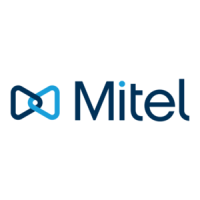Expansion Stages and System Capacity
• DECT
Operation of a DECT system on DSI interfaces with cordless phones. The voice data must be
transformed on connections between DECT and non-DECT endpoints. This process requires DSP
capacity.
Purely DECT-DECT connections set up already do not require any media resources. On the other hand,
media resources are required to set up connections.
DECT channels can be used without a licence.
• VoIP
Connections between IP and non-IP endpoints are made via an IP media gateway. This is carry out by
the integrated standard media switch that switches VoIP channels for call connections in the IP network.
The Standard Media Switch uses media resources for the real-time processing of the call data. VoIP
channels are always required between IP and non-IP endpoints, e.g. for internal connections between a
SIP/IP phone and a digital system phone or e.g. for an external user who is routed to the internal Voice
Mail System via a SIP network interface. In an AIN VoIP channels are also used for call connections
between the nodes (see Use of VoIP channels for an overview).
The number of configurable VoIP channels depends on both the type of DSP chip (see Configuration of
DSP chips) and the configured mode (see Standard Media Switch modes of operation).
• FoIP
For reliable real-time fax transmissions via an IP network using the T.38 fax protocol (ITU-T). Systems
need an appropriate number of VoIP channels.
• Audio services
The audio channels are used to play back and record audio data. Additionally, each audio channel is
assigned a DTMF receiver for enabling user inputs during playback.
Audio channels can be used for voice mail, auto attendant, queue with announcement, call recording,
announcement with audio file, or conference bridge. The allocation is configurable (see Configuration of
DSP chips). Announcement service and music on hold use their own resources.
Note:
On the Mitel SMBC communication server G.711 audio channels are always used for audio
services. The Voice mail mode parameter can therefore not be changed for this system.
• GSM
Enhanced functionality is achieved for integrated mobile/external phones by providing special DTMF
receivers during the call connection. Suffix dialling functions (such as enquiry calls or setting up a
conference with function codes ) can be carried out as a result. The number of GSM channels – and
therefore the number of DTMF receivers – depends on the number of users with integrated mobile/
external phones who want to use this functionality simultaneously.
Release 7.1
47 System Manual for Mitel SMB Controller

